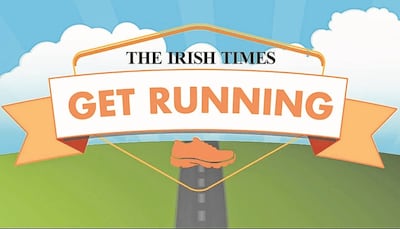“My breathing holds me back when I try to run.”
This is one of the most common struggles of new runners who take to the roads. In fact, many beginners give up on running far too soon as their laboured breathing convinces them that they are not made for running.
Being able to combine effortless breathing with running is essential for any runner to make progress, but more importantly, to help build confidence in their running potential and stay motivated.
Finding your pace
If the only time you usually run is when you are chasing a bus or tearing down the road after a toddler on a scooter then it is understandable that you might doubt your running ability. You may even assume that is how running is supposed to feel. Fear not.
I can confirm that most of us would be breathless if we were to transition instantly from walking leisurely to sprinting. Thankfully ‘going for a run’ shouldn’t feel that much effort at all. If it does, then you are running too fast and your enthusiasm, motivation and energy won’t last too long.
To make your running more enjoyable, slow right down until you find a comfortable pace you can maintain with a quiet breath, even if you feel you might be quicker walking. Over time your speed will improve alongside your fitness, I promise.
Your breath as a guide
Your breath is a pretty good indicator of how hard you are working. Use your breath as a guide to help you move at the right pace for you. Always start slowly to allow your body to adapt to the effort. To balance enjoyment with effort, conversational pace is just about right for most recreational runners.
Indeed there are training runs and races where we do push our breathing beyond this level, but if you are simply aiming to get to the end of a run without needing to walk, listen to your breath. Slow down if it sounds laboured.
Nose or Mouth Breathing?
Most of the latest research is encouraging us to use our noses more and our mouths less when running. You may remember that during the summer I wrote a whole article on the benefits of nose breathing for runners. Maybe you even tried it out?
If you have been experimenting with it and enjoying the new focus, keep it going. It only gets easier and more comfortable. Personally I love it. But if you tried it and struggled, don’t dwell on it too much. I have a few more suggestions for you. In fact, sometimes not thinking about the breath and focusing on other parts of our body can help our breathing settle.
Finding space for air
As we run tension can build in the body if we are not paying attention to how we are moving. Distracted by music, scenery or the clock, a runner can often look very different in second half of a run than when they started out. As tiredness kicks in, they may bend at the waist, start looking downwards and generally have their lower body carry the upper body around. Those long strong bodies that started out the run sink down into the hips.
Picture how that impacts the space in the torso. If you can imagine what that might do to lung capacity, it is no wonder that breathing becomes harder as tension builds and posture dips.
Look where you are going
When you do feel breathless, let that be your trigger to check in with your posture. Are you tall, lengthened from crown of your head? Is there tension in your face or are you relaxed? Are your shoulders clenched or fists tightened? Slow your pace a little, shake out your arms and then return to your starting good posture.
Think tall and relaxed and notice how running feels easier and you will waste less energy on tensing those muscles. By returning to this tall forward facing posture you will have made more space in your torso to allow the lungs to expand. That can only help, whatever way you breathe.
Life outside running
There are some days when running can feel harder on our breath than others. Remember that your life outside of running and indeed all that might be spinning in your head will impact how your running body will perform. What you have to eat and when you last ate can also impact your running comfort.
In fact there are so many factors that can influence how we feel from hormones to sleep patterns that it’s important to run at the pace that feels right based on your breathing rather than based on what pace you feel you should be running at.
Find your rhythm
Sometimes when we focus on being perfect at something we can get more anxious and frustrated when it is not going to plan. If you find you get to the point where none of the tips above are working for you, or indeed if you get anxious when on your run, then decide to simply count.
How many steps do you take on an in-breath and how many do you take on an out-breath. Don’t aim for any particular number, just notice. Focusing on the counting will distract you from your frustrations but it will also help calm your breath. In fact, after a minute you may notice that you will be taking more steps on each breath.
Always a student
There is so much research on breathing for running performance that it is easy to get bogged down in the detail. Often the theory can be complicated and confusing but there is no better way to learn than to put the theory into practice, one piece at a time.
Experiment with your breathing on the run this week. Choose one of the tips above but always remember that none of us are perfect runners or ever will be. There is always something new to learn so don’t get frustrated if you are not seeing progress as quick as you might like. Stick with it. You have nothing to lose.
In fact, what you gain from breathing on the run will pass over to the rest of your day and help you feel better even when you are not in running shoes.
– Mary Jennings is founder and running coach with ForgetTheGym.ie. Mary's book Get Running published by Gill Books is out now.

Sign up for one of The Irish Times' Get Running programmes (it is free!).
First, pick the eight-week programme that suits you.
- Beginner Course: A course to take you from inactivity to running for 30 minutes.
- Stay On Track: For those who can squeeze in a run a few times a week.
- 10km Course: Designed for those who want to move up to the 10km mark.
Best of luck!













